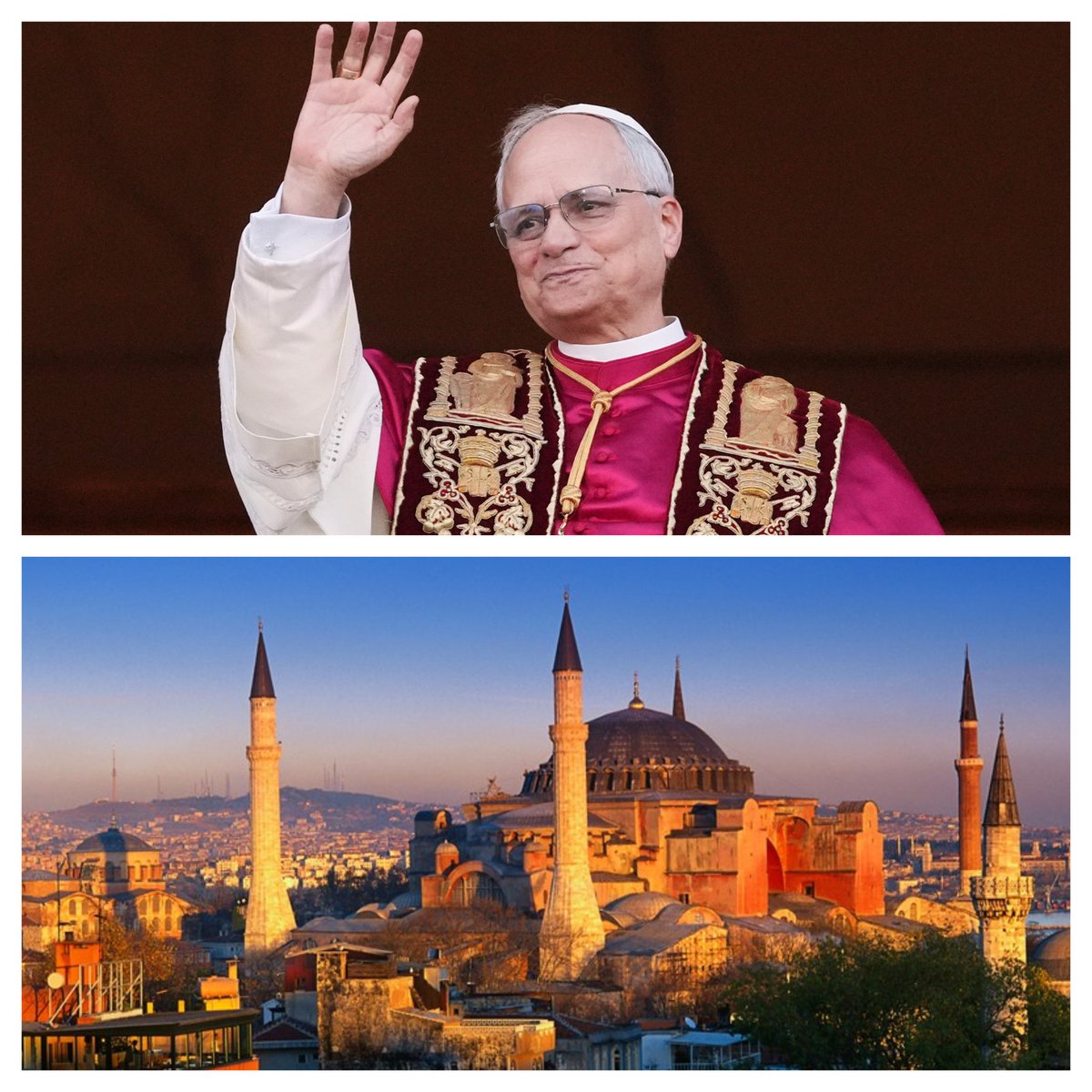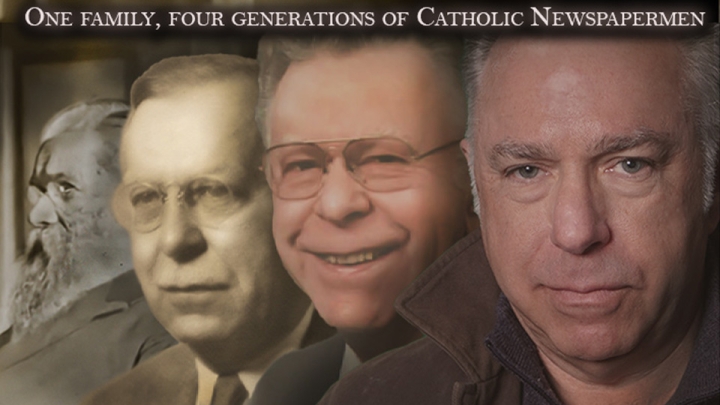Yves Congar’s utter disdain for Catholic orthodoxy…
Vatican II Star Theologian Boasted of Having Urinated on Holy Office Building – Not Once But Twice!

On Sep. 26, 2012, former-Jesuit-turned-journalist Robert Blair Kaiser (1931-2015) published a blog post in which he related a colorful story concerning the French Dominican Fr. Yves Congar (1904-1995), one of the Neo-Modernist star theologians at the Second Vatican Council (1962-65) whom ‘Pope’ John Paul II made a ‘cardinal’ in 1994.
Kaiser began: “I often wondered whether the story was true. Did Congar really pee on the wall of the Holy Office? I’d heard the story from one of my theologian friends at the Council, but I’d never been able to confirm it”; and then happily informed the reader: “Yesterday, on the tenth day of my 3-week lecture tour in India, I got the kind of independent second source that makes a story reportable.”
While Kaiser relied on third party testimony for this story, there is actually direct evidence from the culprit himself. As it turns out, Fr. Congar not merely confirmed that he urinated at the wall of the Palace of the Holy Office, he virtually boasted of it in one of his diaries. (We are indebted to Prof. Roberto de Mattei for pointing out the source.) And it happened twice, not just once.
The book in question is Yves Congar: Journal of a Theologian (1946-1956), edited by Étienne Fouilloux. The original French version was published in 2005, whereas the English edition came ten years later.
The first incident took place on May 17, 1946, when he had gone to Rome with his friend Fr. Henri-Marie Féret (1904-1992). Congar reports:
After Fr Féret’s Mass and thanksgiving we went for breakfast. We came upon the Holy Office. A huge and beautiful building. I shuddered to think that such a beautiful building, one that could shelter so many families, is used for the purpose that we know. ‘I hate the Gestapo wherever it is to be found’. [143] And I paid my compliments. [144]
(Étienne Fouilloux, ed., Yves Congar: Journal of a Theologian (1946-1956), trans. by Denis Minns [Adelaide: ATF Theology, 2015], p. 116; underlining added.)
Yes, this quote is rather obscure, but the book’s editor supplies additional information in the footnotes:
143. We do not know why this phrase is in quotation marks (a quotation of himself from the War?). That the comparision with Nazism is excessive will, of course, be noted.
144. A euphemism indicating that he relieved himself against the wall of the Supreme Congregation {Holy Office}, the palazzo of which was very near St Peter’s Square, on the right as one goes out…
(p. 116)
Yes, Congar called the Vatican’s doctrinal office, charged with safeguarding Catholic orthodoxy, the ‘Gestapo’, which was the name of Hitler’s secret police in Nazi Germany.
And yes, Congar peed on the Holy Office building to express his disdain for the important work done by this most sacred congregation, whose prefect, we must not fail to note, was Pope Pius XII (r. 1939-1958), and whose secretary was Cardinal Francesco Marchetti Selvaggiani (1871-1951) at the time.
Congar detested the Holy Office for its heavy-handedness in dealing with theological mischiefmakers like himself. Although he had not yet been forbidden from teaching or writing at that point, he had already been made aware that Rome’s watchful guardians of the Faith were taking issue with one of his books:
In 1939, [Fr. Marie-Dominique] Chenu and Congar were both called to Paris by the master general of the Dominican order and warned that serious difficulties had arisen from their theological writings. Congar’s book Divided Christendom had raised concerns at the Holy Office, though it was not made clear to him precisely what the problem was.
(Robert Nugent, Silence Speaks: Teilhard de Chardin, Yves Congar, John Courtney Murray, and Thomas Merton [New York, NY: Paulist Press, 2011], p. 38)
Congar’s novel theological ideas were enthusiastically embraced at Vatican II, where they significantly influenced, among other things, the conciliar teachings on ecumenism and the Church as ‘People of God’. Sixty years later, we can appreciate all the more why the Holy Office was so adamantly opposed to the views of Congar and his theological confreres.
The second incident took place on Nov. 27, 1954. By that time, the Holy Office’s secretary was Cardinal Alfredo Ottaviani (1890-1979), serving under Pius XII. Congar relates candidly:
Just as I got to the front of the ‘Holy Office’ the Pope went by in a motor car, preceded by motorcyclists. Fr Paul Philippe was not there. A strange place: in the middle of the austere inner courtyard, in the porter’s lodge surrounded by letter-boxes in the names of Cardinal Ottaviani, the Most Revd First Assessor, etc, I saw a little girl and a little boy playing. I wanted to caress them and play with them for a moment, in order to do honour in them to life, joy, to the truth of life and of human joy. I did not dare to do so because I was being watched and because, as the little girl was already tall, ‘they’ would misjudge my gesture. At least I renewed the gesture of 1946 [that is to say, I pissed in the entrance]. Then I made my visit to the Prince of the Apostles, who had definitely been far more true, far more evangelical!
(Journal of a Theologian, pp. 377-378; underlining added.)
To be clear: the vulgar explanatory comment in brackets is printed this way in the book! It is not a comment added by Novus Ordo Watch but is an addition from Congar himself.
In the General Introduction, the editor explains that he used square brackets to add Congar’s own handwritten interpolations: “Most often he wrote straight off, but some second thoughts led him frequently to make insertions between lines, in the margin, even on an added leaf: we have included these in their place, but within square brackets, except where the contrary is indicated” (p. 25).
This second incident, thus, confirms also the first one.
Further context on this can be gleaned from Robert Blair Kaiser’s post mentioned earlier, from which we will now quote:
Setting up the tale: At Vatican II, Yves Congar, the French Dominican theologian, was one of the visionaries brought in by Pope John XXIII. During the 1950s, he had been on the Vatican’s enemies list for his “false irenicism.” (Translation: he was entirely too friendly with England’s Anglicans.) Then, after Pope John XXIII put him on the Preparatory Theological Commission, he did battle with Alfredo Ottaviani and Ottaviani’s number two man, the Dutch Jesuit Sebastian Tromp, and when he wasn’t providing re-writes of the projects “De Ecclesia” and “Dei Verbum,” he was briefing groups of bishops about what was going on behind the scenes, and, incidentally, explaining the rationale of Pope John’s aggiornamento.
During the Council’s entire three-year preparatory period, Ottaviani and Tromp arranged to put their stamp on the 72 documents to be presented for endorsement by the Council Fathers. (By “their stamp,” I mean the style and tone was pure Council of Trent: too legalistic, too abstract, too much concerned with the prerogatives of the pope (i.e., their own power), still operating under the seige mentality of Pius IX.) It looked like they wanted Vatican II to out-Trent Trent, anathematizing everything in sight.
Though Congar was on John XXIII’s side of the divide, that didn’t seem to matter to Ottaviani and Tromp. Once, when Congar put up objections to a particularly Trent-like expression in the schema on the Church (which was undergoing multiple revisions during the Council’s first two years), Ottaviani actually threatened to put Congar on trial for heresy. (In Congar’s Journal of the Council, which I am reading on my iPhone during this trip, Congar quotes himself lashing back at Ottaviani, “Are we having a discussion here, or is this an Inquisition?”)
Well, enough background. The story I heard was that, one night after dinner, Congar and some friends were walking past Ottaviani’s Palazzo di Sant’ Ufficio. He proceeded to excuse himself for a minute, walked over to the building, peed on the wall and returned to the group with a satisfied smile on his face. A good story, but one I was reluctant to report, until now.
(Robert Blair Kaiser, “Story Confirmed: Congar Did Pee on the Wall of the Holy Office”, Kaiser’s Vatican II Journal, Sep. 26, 2012)
Congar’s vulgar urinary deeds will live in infamy as a good illustration of what his theology has done to the purity of the Roman Catholic Faith.
Image source: composite with elements from Amazon and Wikimedia Commons (Jim McIntosh)
Licenses: fair use and CC BY 2.0




No Comments
Be the first to start a conversation